The Hollywood Sign Hits 100 and Gets Its Own Classic-Car Parade

Like many Hollywood celebrities, the Hollywood Sign is older than it looks. The famous letters turned 100 in December 2023, not that you'd know it from looking at its shiny, wrinkle-free surfaces. Originally constructed as a temporary real estate billboard to promote the Hollywoodland housing development, the sign has survived well past its initial 18-month shelf life to become an internationally known landmark nestled in the foothills of Los Angeles. Here, in the capital of the film industry and the epicenter of car culture, the Hollywood Sign represents the promise of the American dream as seen through a camera lens.
With that in mind, what better way to celebrate this anniversary than making a pilgrimage to the sign in a parade of movie cars, and where better to start it from than another Los Angeles, landmark, the Petersen Automotive Museum?
Viewed from eight miles away atop the roof of the Petersen, the sign looks like a miniature of the real thing. The distance reduces its 50-foot-high letters to an oversize eye chart, shivering in the shadows, shimmering in the sunlight, just waiting to be driven by.
Petersen marketing director Luna Bondesan says L.A. has always been a car city. "L.A. was built around cars. It wasn't just superficially a status symbol, but it was a necessity for the size and the geography of [the city]."
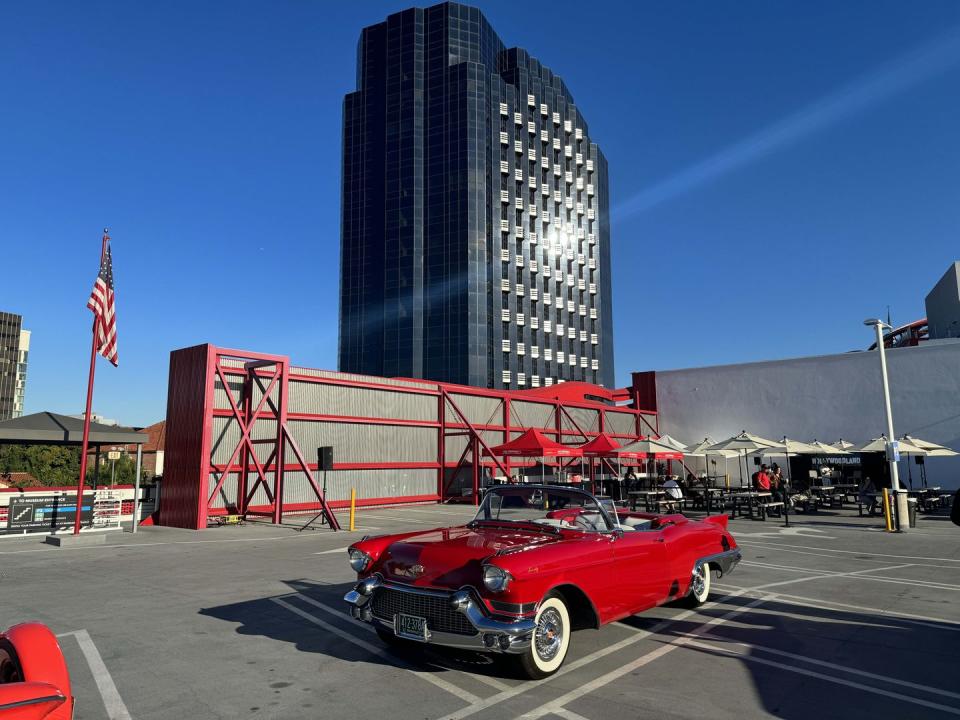
Back in the 1920s, Hollywood was growing at a furious pace, fueled by the burgeoning film industry and an influx of people looking to strike it rich. As the population of the area exploded, ambitious developers broke ground on the foothills that lay just to the north. Hollywoodland was one of those early developments, and its bold claims offered respite from what residents were already describing as an overcrowded city. "Above the traffic congestion, smoke, fog, and poisonous gas fumes of the lowlands," reads a marketing pamphlet of the time.
The Hollywoodland development also coincided with the increasing ubiquity of cars. Situated 700 feet up from its namesake city, Hollywoodland was designed from the start around a car-centric lifestyle. Beachwood Drive was the lone road to the top. It remained a dirt trail for nearly a year after the first home was constructed in 1923, even as developers continued to lay down ribbons of concrete throughout the canyon. Whether it was by purposeful design or simply an overlooked detail, the rutted track added to the burgeoning neighborhood's rarefied exclusivity. Unless you wanted to commute on a burro, the only reliable way up was by car.
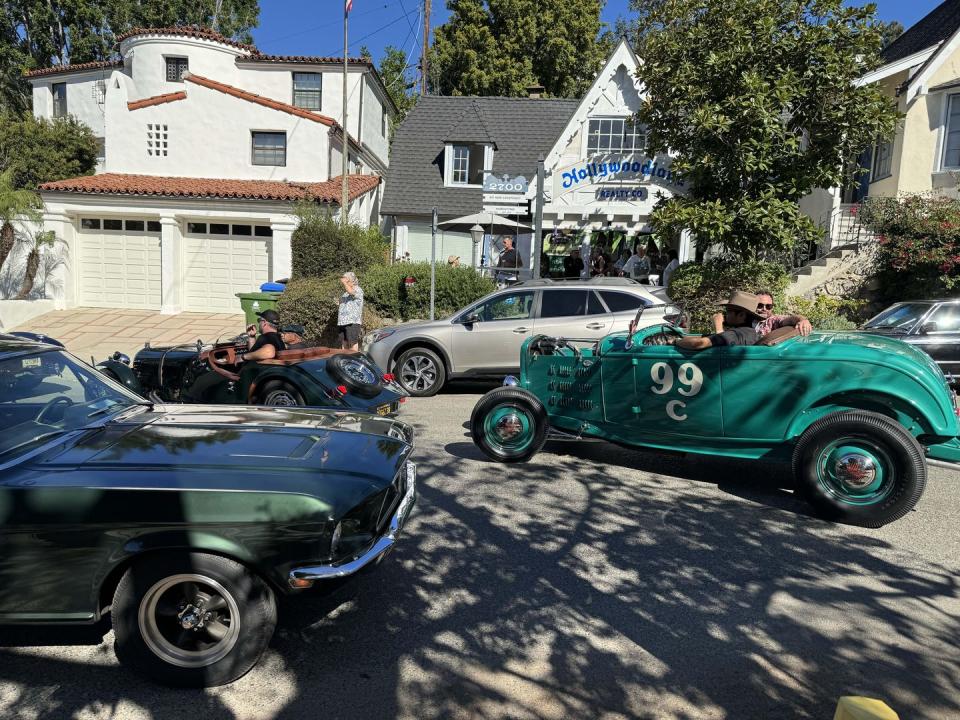
For our visit to Beachwood Drive, Bondesan and her team assembled a varied cast across all makes, models, and film genres, which included bit parts (a 1950s Chevy Impala once owned by Sylvester Stallone), supporting characters (a bright pink Honda S2000 from the Oscar-adjacent 2 Fast 2 Furious), ensemble players (a surviving Superformance Cobra from Ford v Ferrari, and scene stealers (a 1964 Chrysler Imperial from The Green Lantern). Better known as Black Beauty, the Imperial is a star of Petersen's current Modified for the Movies exhibit. Modified, indeed. Smoke and water cannons? Torpedo launcher? This is the ideal car for Los Angeles traffic.
When the time came to take off, however, the Imperial was nowhere to be found. Petersen staff driver David Sanchez shrugged. "Brake booster," he said by way of explanation. Mechanical woes also scuttled appearances by a James Bond Jaguar XKR, Magnum P.I.'s Ferrari, and Herbie. Dreams of torpedoing my way through LA traffic dashed, I instead claimed shotgun in a 1957 Cadillac Eldorado Biarritz convertible named Bella.
Bella was unusual in this group as she had no industry connections or movie credits to her name. But who needs hollow validation when you come from money? Cadillac only built 1800 examples of its flagship convertible that year at a starting price of $7750—three times the cost of a Chevy Bel Air. Donated to the museum by notable car collector (and former Microsoft president) Jon Shirley, Bella's provenance comes from her rarity. Plus it's highly likely some big-shot film producers drove similar cars back in the day, so close enough.
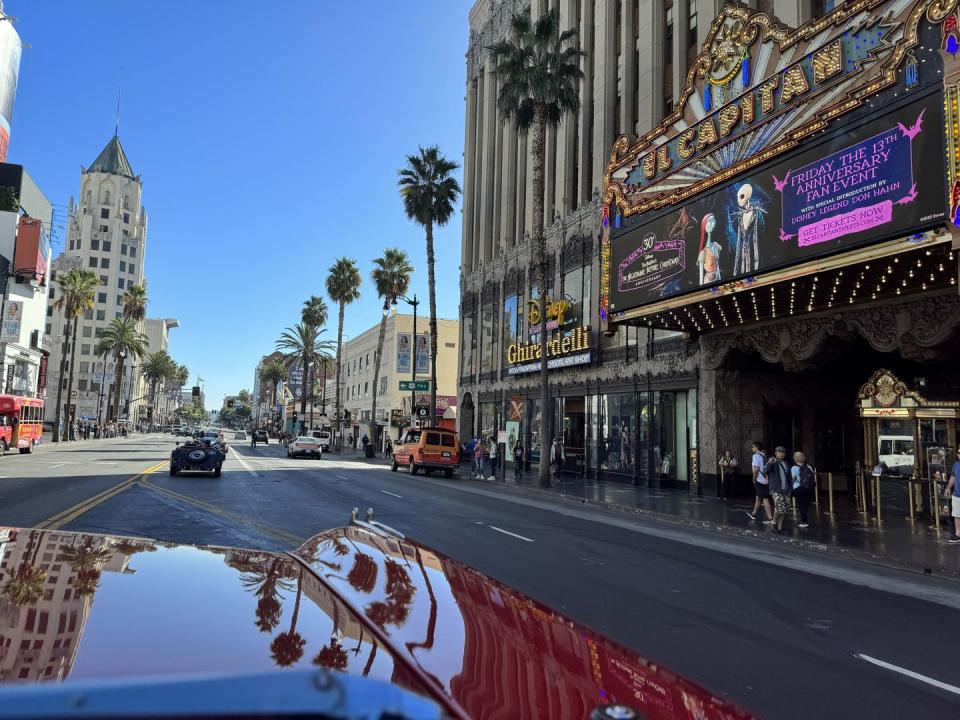
The Procession Heads North on Rodeo Drive
Engines blat and burble to life, and our procession snakes out of the Petersen heading west down Wilshire Boulevard towards Beverly Hills, where we'll head north on Rodeo Drive, and then east on Sunset Boulevard. Bondesan says the circuitous route was purposeful. "It might sound cliché, but we thought that that was a good way to get up there by going through the landmarks. I mean, those roads are a daily open-air car show anyway, right?"
She's right. But our little parade seems to be capturing the attention of even the most jaded car spotter. Phones and cameras spin in our direction along every block. The transparent variety allows everyone to make their own personal connection.
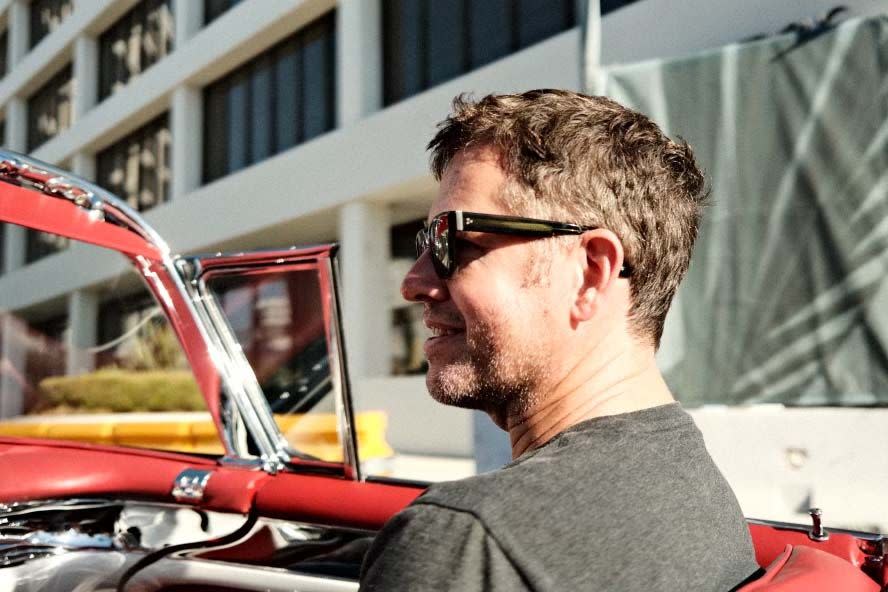
Movie cars are the key element in a period piece. They're time machines that can visually establish a mood, a moment. Populate a street with a dozen cars from the same decade, and the viewer is effectively whisked to a specific moment in time. Fashion is cyclical and hairstyles may come and go, but the iconic shape of a car is forever.
Whether they're modified or bone stock, the best movie cars are the ones who share billing with their human co-stars. They're loyal companions who save the day. Willing accomplices who help pull off the impossible mission. Sometimes they're a little bit of both, upstaging the hero in the process. Mention the movie Bullitt, for example, and it's likely the '68 Mustang comes to mind first—rather than what's-his-name behind the wheel.
And just like a famous movie star, movie cars can also be cantankerous, disagreeable divas who refuse to perform. The day has warmed considerably, much to the consternation of some in the group. These cars may be timeless, but they're still prone to the vagaries of old age.
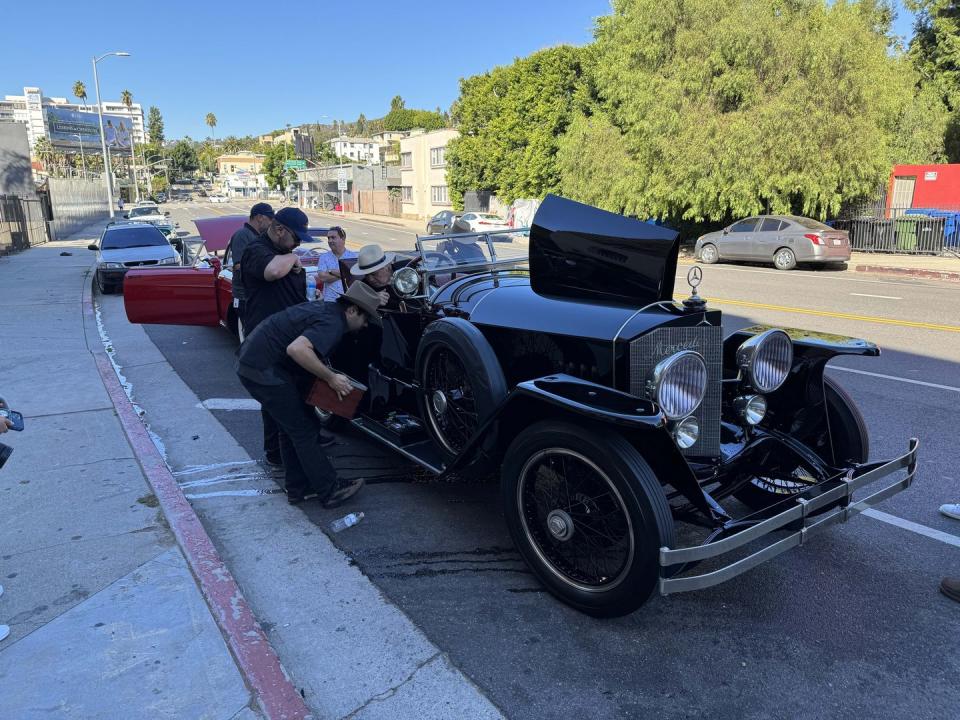
As we cruise down Sunset Boulevard, Ray Brown's '32 Ford roadster peels off onto a side street. A second later, Sanchez's phone rings. "Yo. Got it. You okay? Okay." He kills the call and looks over at me. "Temperature!" A few blocks later, we come to a dead stop. David peers over the windshield header. "Hetfield's." As in Metallica frontman James Hetfield and his custom 1936 Auburn boattail. I thought of the news making its way back to owner. Man, Hetfield's gonna be pissed. I'm just glad it wasn't Stallone's Impala.
The casualties continue. Just over the next rise, heat also stifles the momentum of a 1923 Mercedes Targa Florio. Sanchez tucks in behind to offer assistance. Just as he shuts off the ignition, he realizes his mistake. Sanchez twists the key, but Bella refuses his advances. Vapor lock has reared its ugly head. All we can do is wait for cooler heads to prevail. While the Mercedes driver feeds baby sips of water to the overheated engine, Ray Brown's revived '32 roadster glides onto the shoulder behind us. We take it as a good omen. An hour after we set out from the Petersen, we finally turn north onto Beachwood Drive.
Call me a cynic, but living in the shadow of the Hollywood Sign has done nothing to improve my opinion of humanity. Every day, I witness hundreds of tourists intent on snapping the ultimate selfie. Their rental-spec Mustangs and Camaros moan at partial throttle as their drivers cast furtive glances at the GPS. Getting close to the Sign means navigating narrow streets, puttering around blind curves, and avoiding the hordes of sign-seeking pedestrians.
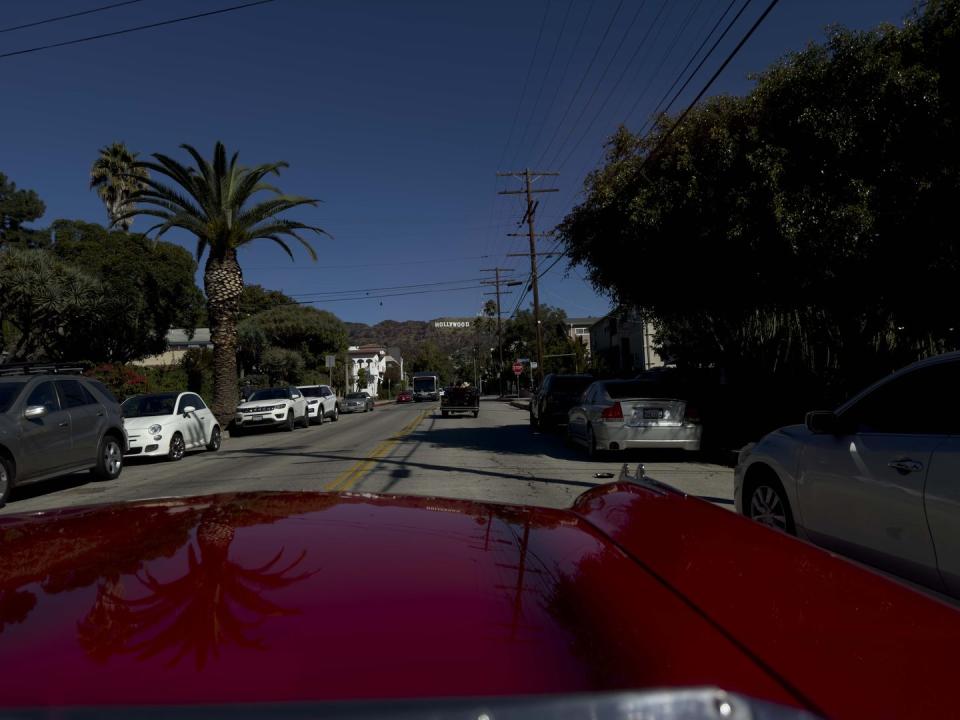
But as Bella chugged up the gentle grade and the Hollywood Sign emerged, I did something that I swore I would never do: I raised my phone and took a picture. And then another. Being a passenger in a car—this car—gave me a new perspective on things. There was something alluring about the sign, viewing it not as a jaded resident but as a tourist, as someone who associates the landmark with the land of opportunity. Is it so wrong to put stock in such a dream? Certainly, their rental Mustang will never land a starring role in a remake of Bullitt, but atop the crown of Hollywood, perhaps the drivers feel a bit of Steve McQueen cool.
Once past the village, the streets of Hollywoodland become a narrow, twisting tributary of blind corners, built to honor the contours of the canyon. Our police escorts long gone, it's up to me to give Sanchez directions to the final destination. Finally, at the very top of a dead-end street, we're granted access to a prime viewing spot that's normally the domain of pedestrians. In all the time I've lived in Hollywoodland, I've never seen this gate open. Not once. Maybe she never lit up the silver screen, but Bella looks like a star underneath the sign. She's finally come home.
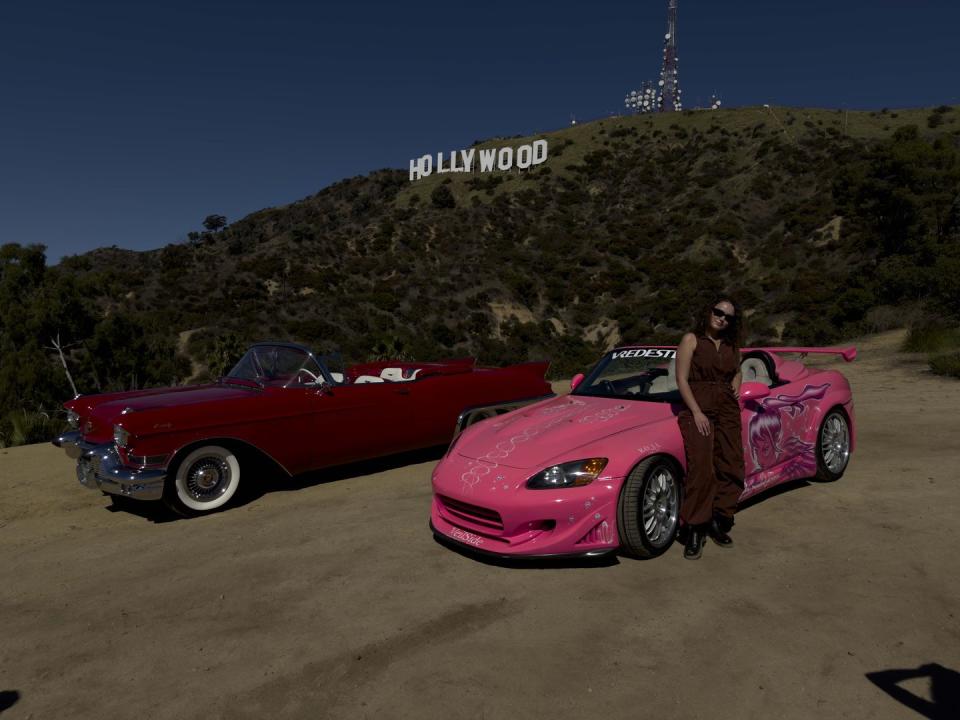
The air turns acrid during the descent, as Bella's drum brakes feebly attempt to curtail two tons of momentum. "Brakes are cooked," say Sanchez. "Pedal's all the way to the floor." Torpedoes or not, it's a good thing we didn't take the Imperial after all. Then he looks at me. "Did you get what you came for?" Like the original Hollywoodland residents, like the tourists who follow, I can say with certainty that I did.
You Might Also Like

 Yahoo News
Yahoo News 
